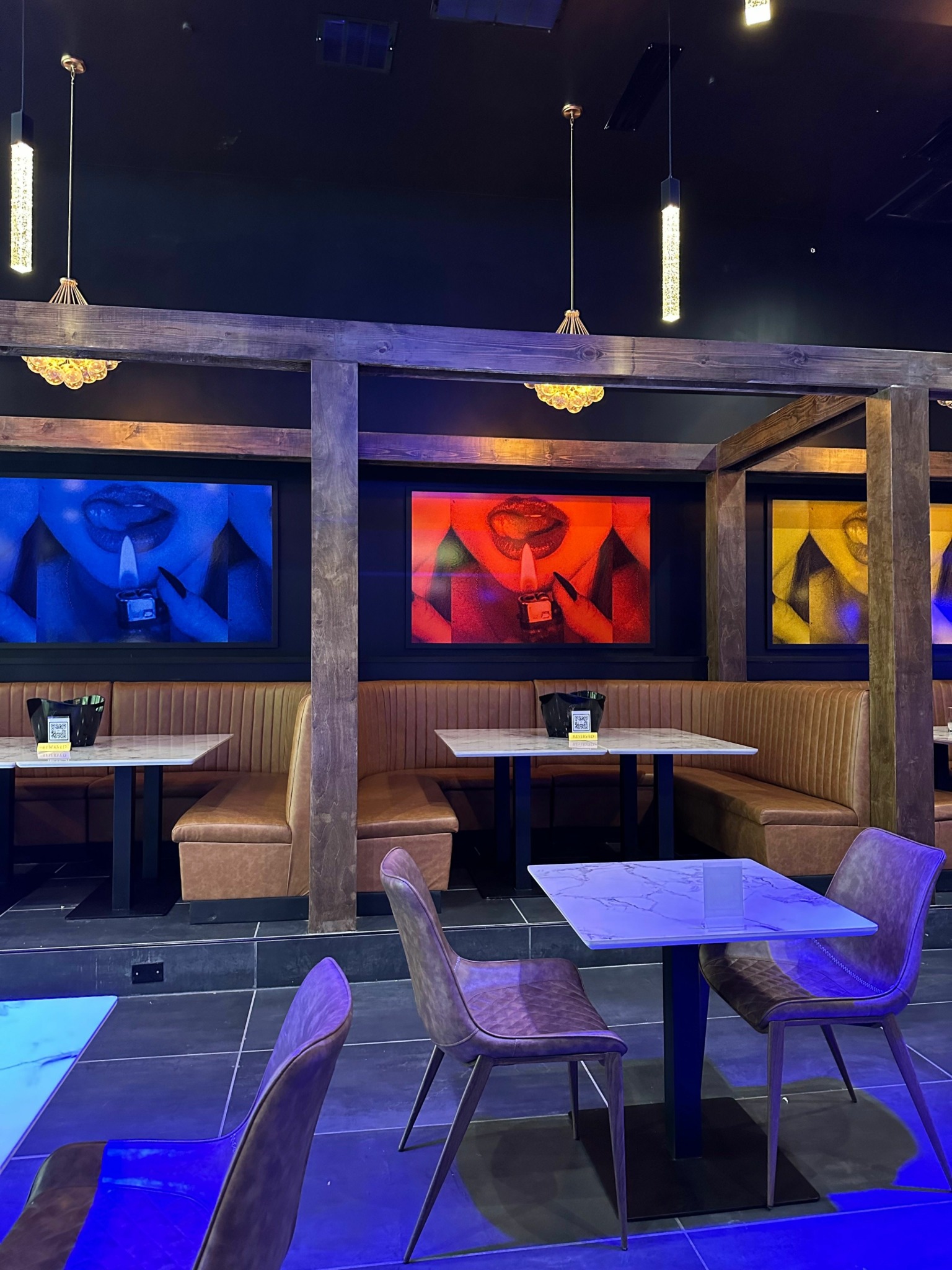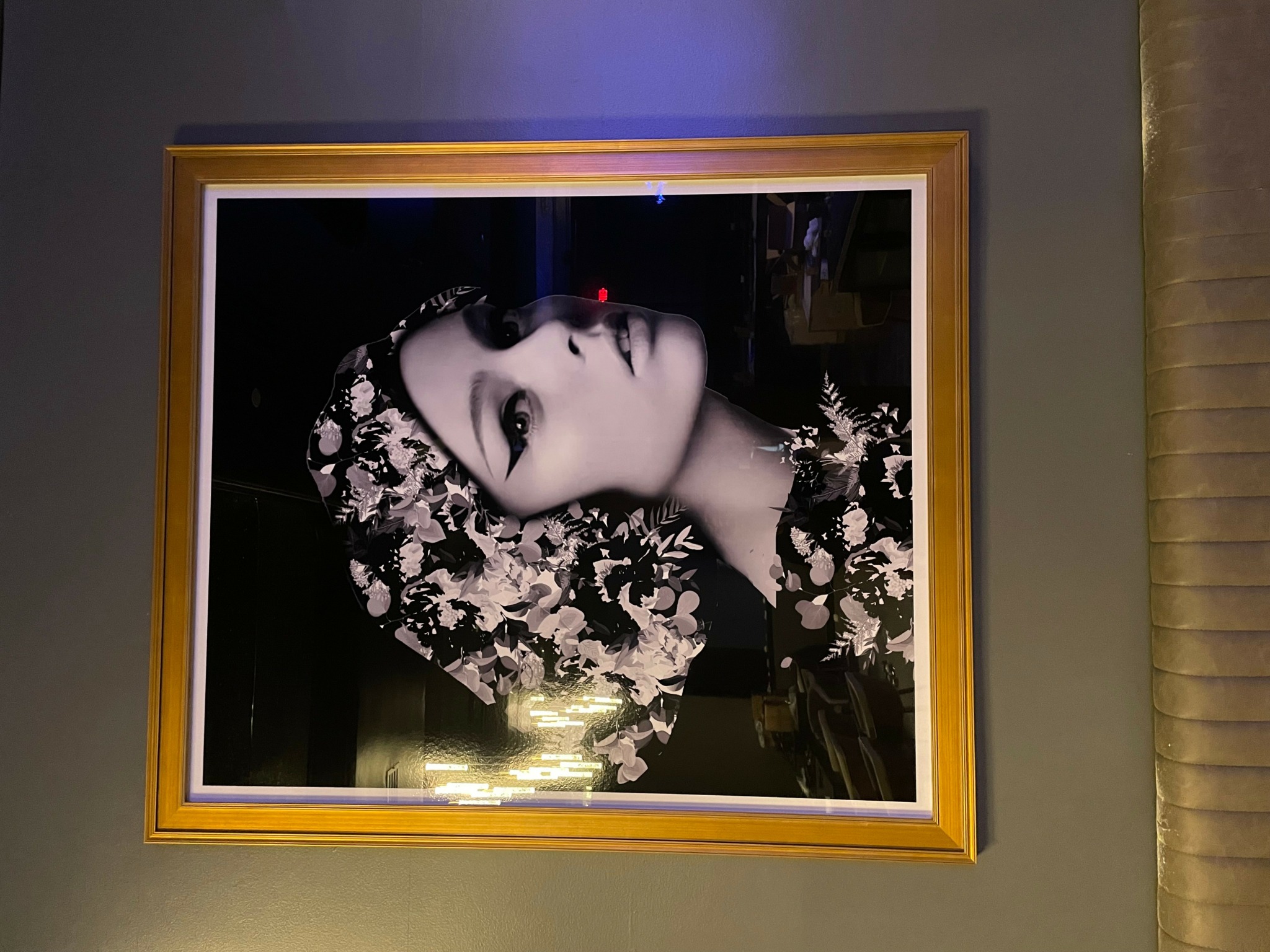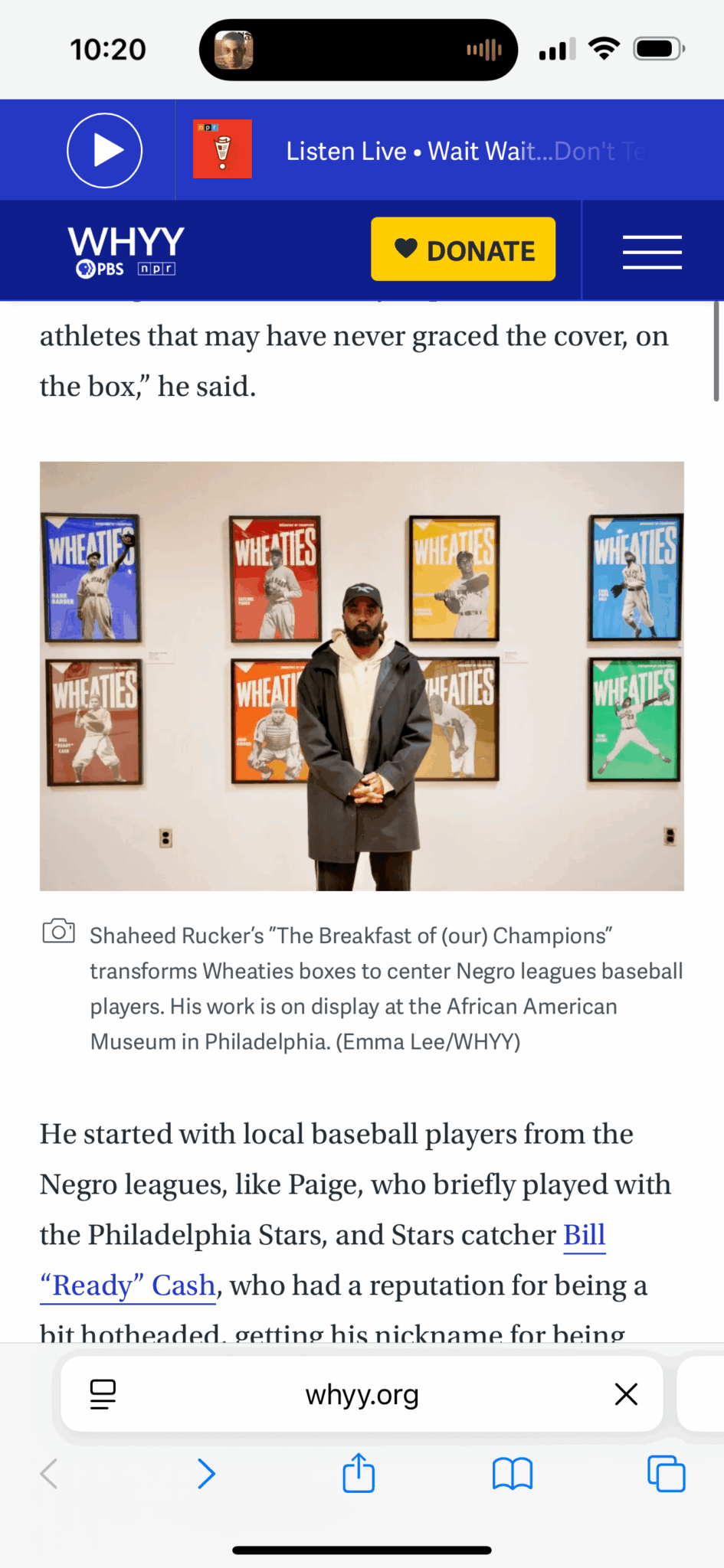We recently connected with Shaheed Rucker and have shared our conversation below.
Shaheed, thanks for taking the time to share your stories with us today Are you happier as a creative? Do you sometimes think about what it would be like to just have a regular job? Can you talk to us about how you think through these emotions?
I find great fulfillment and joy in pursuing life as a creative. However, i can’t shake the idea of what security looks like, and how my future will shape. so im constantly entertaining the idea of working for an agency or company that allows me to exercise my creativity while having some form of financial security. Its something that’s consistent in my way of thinking but then I occasionally get a wave of opportunity as a creative and then it’s postponed.

Awesome – so before we get into the rest of our questions, can you briefly introduce yourself to our readers.
I’m Shaheed Rucker, a visual artist, marketing strategist, and creative director born and raised in Philadelphia, PA. My journey into the creative industry began with a deep fascination for storytelling and cultural narratives, which I explored while earning my degree in psychology from Bethune Cookman University. This foundation in understanding human behavior and motivation profoundly shapes my approach to branding and creative direction today.
My work focuses on blending visual artistry with marketing strategy to create experiences and campaigns that resonate deeply with diverse audiences. I specialize in mixed media collage, photography, and graphic design, with a strong emphasis on color theory, typography, and page layout. These tools allow me to build compelling visual compositions that tell stories, evoke emotions, and drive engagement. Whether I’m reimagining iconic brands, designing merchandise, or crafting experiential campaigns, my goal is always to connect audiences to a brand’s story in a way that feels both authentic and impactful.
I’ve had the privilege of working with renowned brands and organizations such as BET, Jet Magazine, the Atlanta Braves, and Stacey Abrams’ campaign. Some of my most notable projects include reintroducing Jet Magazine to a younger audience through modern visual art, creating experiential marketing campaigns for BET’s Twenties, and designing culturally resonant merchandise for political and corporate initiatives.
What sets me apart is my ability to merge nostalgia with innovation. I draw inspiration from history, particularly midcentury design and advertising, to create work that feels timeless yet fresh. My work is rooted in a deep respect for cultural narratives and an understanding of how visual language can bridge the past and present to create something new.
The thing I’m most proud of is how my work has sparked meaningful connections—whether it’s helping a brand find its voice, bringing communities together through an art installation, or empowering underrepresented voices to shine. I’m also proud of my ability to operate at the intersection of creativity and strategy, ensuring my work not only looks great but also achieves tangible results for clients.
For potential clients, followers, or fans, I want them to know that my work is about more than aesthetics—it’s about purpose, intention, and creating lasting impact. Whether I’m designing for a corporate brand or collaborating with a nonprofit, I aim to leave a legacy that celebrates culture, empowers communities, and inspires future generations.
If you’re looking for someone who can craft bold, thoughtful visuals that tell your story in a way no one else can, I’d love to collaborate with you. My brand and work are rooted in innovation, cultural connection, and a passion for creating art that matters.

Is there something you think non-creatives will struggle to understand about your journey as a creative?
One thing I’ve often found non-creatives struggle to fully grasp is the profound impact that design and attention to detail can have on the success—or failure—of a business. Many business owners focus heavily on the big picture: the product, the service, or the numbers, without realizing that the “small” things, like branding, visuals, and user experience, are often the make-or-break elements.
Design is not just decoration; it’s a form of communication. It tells your audience who you are, what you stand for, and why they should trust you—often before you even get the chance to say a word. If your visuals don’t align with your message or feel disconnected from your audience, it creates confusion or mistrust. You could have the best product or service in the world, but if your branding is sloppy, outdated, or inconsistent, people will question your professionalism and credibility.
For example, I’ve worked with business owners who initially didn’t see the value in investing in cohesive branding. They thought their product could speak for itself. But when we overhauled their logo, streamlined their color palette, or redesigned their marketing materials, their audience engagement and sales skyrocketed. Why? Because a polished, intentional design communicates care, quality, and a clear vision—things customers intuitively look for, even if they can’t articulate it.
It’s like building a ship. You can have a sturdy hull and strong sails, but if there’s a small crack below the waterline or poorly tied knots, that ship will sink. Design is often that unseen “below the waterline” factor that supports the larger structure. When ignored or undervalued, it creates weaknesses that can derail even the greatest business ideas.
What I want business owners to understand is that design isn’t an expense—it’s an investment in how your audience experiences your brand. It’s not just about making things look good; it’s about creating trust, clarity, and connection. The typography you choose, the layout of your website, even the color of a button on your app—all these details shape how people perceive your business.
The lesson I hope people take from my journey is that great ideas deserve great execution. You can’t afford to overlook the small things because they are often what your audience notices first. Investing in design is not a luxury; it’s a necessity in today’s crowded, fast-moving marketplace. Recognizing its value early can be the difference between sinking or sailing toward your goals.

How about pivoting – can you share the story of a time you’ve had to pivot?
Life is truly about pivoting, adapting, and finding ways to integrate all the experiences, lessons, and insights you gather along the way. One pivotal moment in my life came when I faced a challenge that many can relate to—trying to break into an industry that felt impossible to access.
I remember the frustration of sending out application after application, only to be met with silence. The rare interviews I landed often felt like closed doors because, as I learned, companies tend to hire people they already know or those within their immediate circles. I was on the outside looking in, and I realized that if I wanted to change my circumstances, I needed to change my approach.
Instead of waiting for someone to open a door, I decided to build my own. I began organizing networking mixers with the goal of strengthening my connections and increasing my visibility. These events weren’t just about me; they became platforms for other young professionals and aspiring creatives who were also trying to find their way. I created spaces where people could meet, share ideas, and collaborate—essentially, I became a bridge for others who were navigating the same struggles I was.
As my network grew, so did the impact of these mixers. What started as a way for me to get my foot in the door turned into a significant platform that others found valuable. I realized that I had accidentally become the kind of resource I was looking for in those early days. Instead of trying to work for those I initially sought out, I began collaborating with them on equal footing.
That pivot taught me the power of initiative and community. It also showed me that sometimes the obstacles we face can be opportunities to create something bigger than ourselves. By blending all the experiences I’ve accumulated over the years—whether it’s through travel, education, or creative exploration—I’ve learned to approach life with a mindset of possibility. When the path ahead feels blocked, I ask myself: What can I build from what I already have?
That lesson has stuck with me in every project and every collaboration since. It’s a reminder that sometimes the pivot isn’t just a change in direction—it’s the beginning of something transformative.
Contact Info:
- Website: Shaheedrucker.com & cmcreative.co
- Instagram: @change_makers
- Facebook: Shaheed Rucker
- Linkedin: Shaheedrucker
- Twitter: @change_makers




